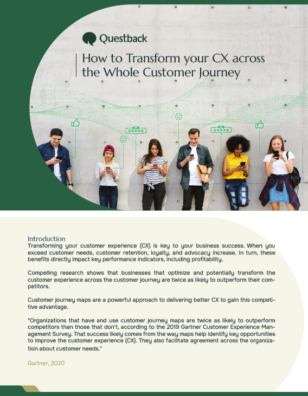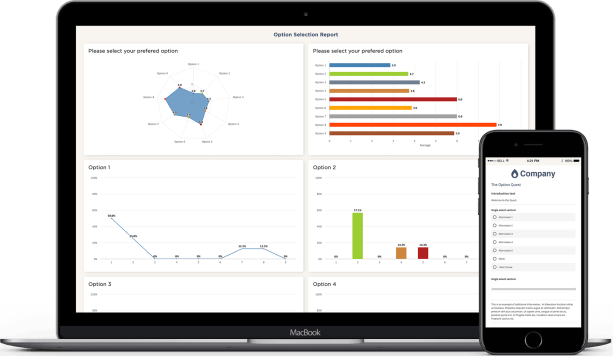The Value of Feedback


Feedback fuels continuous business growth. In this guide, we will discuss the value of feedback. If captured and used well, feedback enhances the customer experience, increases employee engagement and performance, and drives business growth. Our guide shows you how.
This guide covers everything you need to know about best practices in customer and employee feedback. You will first discover the immense value of feedback, according to science. To realize these benefits, we detail how to capture feedback using diverse approaches continuously. We also highlight several best practices to ensure your business benefits from feedback as a valuable growth strategy.
Summary: What are Best Practices in Gaining Value from Feedback
Feedback isn’t a series of events; best practice involves continuous feedback from customers and employees. Feedback is best captured using diverse approaches. For instance, vital employee feedback is collected via employee surveys, pulse surveys, 360-degree feedback programs, and exit surveys. Likewise, feedback opportunities can be strategically placed across the whole customer journey. To maximize the value of feedback as a business growth strategy, best practices include anonymity, timely responses, and closing the feedback loop.
Table of Contents
Try Questback 14 days for free.
The Value of Feedback, According to Science
Diverse disciplines validate the value of feedback, whether in psychology, education, business, or neuroscience. Before discussing specific benefits for employees and customers, we highlight the what, why, and how feedback creates value.
Signals a Gap. At its most basic, feedback is information. Yet its information often highlights gaps that need to be filled. For instance, an employee may discover their performance is rated higher by peers than they realized. Retail management may also unearth what customers think of them, but this news isn’t as good as initially believed. Either way, feedback as a signal, if acted upon, can lead to improvements. According to systems thinker Peter Senge, gaps create a ‘creative tension’ — we feel compelled to close the gap creatively.
Motivates Action. When others recognize our progress and achievements in closing gaps, this positive feedback amplifies positive action—we want to do even more. Constructive feedback also motivates action. Therefore, positive feedback boosts self-identity, confidence, and the motivation to do more. Similarly, if delivered well, constructive criticism inspires people to perform better.
Identifies Errors. Feedback does more than identify where we’re at or highlight gaps. If specific, feedback helps individuals and teams to identify errors and how to correct them. By highlighting mistakes or weaknesses, feedback guides us toward more effective approaches and helps prevent the reinforcement of incorrect behaviors or misconceptions.
Informative Benchmarks. When we receive feedback, it provides a valuable benchmark from which to measure progress. For instance, when a business measures and tracks its Net Promoter Score, it knows how they’re faring, for better or worse, over time.
Better Communication. If an organization fosters a thriving feedback culture, the firm is far more likely to experience better communication, collaboration, and creativity. An open, trusting dialogue allows for exchanging ideas, perspectives, and suggestions, leading to greater understanding and cooperation within teams and relationships.
Continuous Improvement: Feedback isn’t just an outcome. It’s a powerful means to drive continuous improvements across the whole firm. By soliciting feedback from customers, employees, and other stakeholders, your business will quickly and efficiently identify areas for improvement, address concerns, and enhance products, services, or processes to meet customer and employee needs better.
Neurological effects. Coming back full circle, what drives our ability to notice performance gaps, motivate action, and foster better outcomes? It all starts with our brains. Neuroscientific research shows that feedback activates our brain’s reward pathways. This, in turn, increases dopamine release, which motivates and reinforces positive behaviors.
Now that we know what the science says about feedback’s value, let’s explore its tangible benefits for your employees and customers.

Increase employee engagement
An effective feedback culture no longer adheres to the tradition of sitting down for an annual or periodic performance review. Instead, feedback gathering is a continuous effort to drive better employee engagement. But in which specific ways will feedback help your business?
Instills Clarity. Employees who receive regular and constructive feedback know what’s expected of them. Moreover, what these employees do is far more likely to align with your business objectives. When expectations are communicated and understood, employees are more engaged and motivated to perform at their best.
Provides Validation. When we do something right, feedback is validating. This positive, validating feedback fuels growth; employee contributions are recognized, and desirable behaviors are reinforced, enhancing their sense of accomplishment and value within the organization. Moreover, employees who receive regular recognition and praise are more likely to feel engaged and committed to their work.
Professional Growth. When employees thrive, so do their organizations. Specific constructive feedback offers employees ample opportunities for skill development and growth. These identified areas for improvement and guidance also enhance firm performance.
Feedback Culture and Trust. A growth-oriented feedback culture promotes trust, transparency, and open communication between employees, managers, and executive leaders. When feedback is encouraged and valued as a two-way process, employees are empowered to share their ideas, concerns, and feedback with their supervisors. Indeed, organizations with a strong feedback culture experience higher employee engagement and innovation levels.
Purposeful Impact. Engagement increases when a direct relationship exists between employees and an organization’s purpose. Why? Purpose provides meaning. So, when feedback connects employee efforts to the broader mission, vision, values, and purpose of an organization, we develop a stronger sense of purpose and commitment to our own work.
Yet, it isn’t just employees who benefit from feedback. So do your customers.
Try Questback 14 days for free.
Nurturing delighted loyal customers
Delightful customer experiences fuel customer loyalty, the lifeblood of any business. And feedback, if used well, contributes to the design of delightful customer experiences. Here’s how.
Improved Offering. Whether you provide goods or services, feedback provides a valuable window into your customers’ needs, preferences, and pain points. When you use an insight solution, such as Questback, you can collect and analyze an assortment of feedback on a continuous basis. This enables you to identify any areas ripe for improvement. Moreover, when your customers know their feedback is listened to and acted upon, they feel valued. This, in turn, builds loyalty.
Adaptive to Needs. Rather than offer a ‘one-size-fits-all’ approach, firms increasingly personalize and customize their customer offerings. Brand loyalty increases when customers feel appreciated and special and receive personally relevant information. Without feedback – customer data – you will struggle to tailor what you offer to meet customer needs.
Customer Experience. When we measure and understand the customer journey, this feedback identifies multiple opportunities to enhance the overall experience. We recommend you listen to customer feedback at diverse touchpoints. When you do this, you can address pain points, streamline processes, and deliver a seamless and enjoyable experience.
Building Trust and Credibility. When our customers see us actively seeking feedback, we send a valuable message. It shows we’re committed to customer satisfaction. Moreover, we build trust and credibility by encouraging and responding to feedback well. The value of trust cannot be underestimated; it is a key driver of loyalty and, therefore, of business value.
Retention and Repeat Business. It’s now easier to understand why delighting customers through feedback-driven improvements and personalized experiences increases customer satisfaction and loyalty. When we keep prioritizing customer feedback and delivering exceptional experiences, our customers will repeatedly return and, as such, drive long-term profitability.
Now that we know a feedback culture sets a business apart from its competitors, drives employee engagement, and drives profitable growth, how do we capture this feedback to realize this growth potential?

How to Improve Your Feedback Value Throughout the Customer Journey
Do you want to create an excellent customer journey with ongoing feedback management? Gain competitive advantages, increase profits, and improve your customer satisfaction?
How to Collect Customer Feedback
When it comes to getting customer feedback, you have several options.
- Surveys. Online surveys are a popular, proven method for gathering customer feedback. They offer structured opportunities to ask and collect vital data to drive better decisions and improve business offerings. What’s more, surveys are a highly flexible approach. An online survey solution, such as Questback, means your surveys can be emailed, embedded on your website, or shared via your social media channels. Even better, with an insight solution like ours, all your feedback is hosted under one roof. This makes it far easier to integrate, analyze, and compare diverse survey insights over time.
- Feedback Forms. Feedback can also be super quick; just one question can deliver huge value, for example, “Did you find everything you needed today?”. This is where short feedback forms come into their own; you can embed them across the customer journey — your website, mobile app, or physical locations.
- Social Media Monitoring. Every social media platform provides immense opportunities to listen and respond to the customer’s voice. Feedback is detected by mentions, keywords in comments, and reviews.
Customer Reviews and Ratings. Encouraging customers to leave reviews and ratings on platforms like Google, Yelp, TripAdvisor, or industry-specific review sites can also provide valuable feedback. What’s more, you could augment this approach with surveys. For instance, you could also solicit reviews through follow-up emails or in-store prompts.
While there are other feedback sources, such as focus groups and one-to-one interviews, we never recommend relying on one source. While you may have a social media analytics platform or regularly monitor customer review sites, you must also provide structured, proactive opportunities for your customers to use their voice, such as surveys and feedback forms. Therefore, when capturing customer feedback, it’s best to avoid an either/or mindset. Instead, use several tools, including online surveys, to capture these valuable customer insights.

How to Receive Employee Feedback
Like customer feedback, you don’t want to rely on one source. Neither do you only want to draw on opportunistic feedback, such as during one-on-one meetings. Structured, proactive opportunities to capture employee feedback include four proven approaches.
- Employee Surveys. It’s best to regularly survey your employees to gather their feedback. Online surveys are ideal for measuring what matters most, e.g., job satisfaction, organizational culture, workplace promotional opportunities, or attitudes toward leadership. While your questions depend on your specific needs, insight tools, such as Questback, are regularly used to create, distribute, and analyze employee surveys.
- Pulse Surveys. While an employee survey occurs regularly, e.g., bi-annually, short, frequent pulse surveys capture real-time employee feedback on specific topics or events. For instance, many Questback clients gather rapid feedback and track employee sentiment over time.
- 360-Degree Feedback Reviews. An increasingly popular insight approach, especially among those in leadership positions, is gathering 360-degree feedback. This is where several of your colleagues, including your line manager, report back on your performance. Given the breadth and depth of feedback, 360 feedback could also be used to get the bigger picture.
- Exit Interviews. Staff turnover is expected, but it’s best not to overlook this as a valuable insight opportunity. Conducting exit interviews, face-to-face or via survey, with departing employees will provide valuable insights into turnover reasons and help you identify areas for improvement.
Given these diverse opportunities to capture feedback from customers and employees, what does best practice look like when gathering feedback?

Six Best Practices to increase your feedback value
Given its value, feedback needs to be done well. But best practices aren’t limited to must-dos. They also cover several don’t do’s, as highlighted next.
- Do be anonymous. As important as honesty is, people rarely want to reveal their feedback if it risks them being perceived as negative. A core benefit of using a third party, such as Questback, is the ability to make your feedback survey anonymous easily. This will encourage more significant insights into what your customers and employees think and feel.
- Don’t receive vague feedback. Feedback isn’t valuable unless it generates insights, and vague or generic feedback isn’t valuable. To avoid this scenario, be clear and specific about the behaviors or outcomes that must be addressed or improved. Then, ask unambiguous, unbiased, non-leading questions to increase the likelihood of getting the best responses.
- Do it in time. Delaying feedback when issuing invites or responding to insights is a missed opportunity we can rarely afford. For instance, if you pick up on an issue but delay your response, you risk it worsening. Likewise, if people share their concerns but don’t get a timely response, don’t be surprised if they leave.
- Don’t ignore feedback. Feedback isn’t always good news. Yet, while humans innately want to avoid difficult situations, negative feedback is not something we can ignore. Therefore, your business growth doesn’t just depend on capturing feedback. It also relies on acting on it. Therefore, building the courage and confidence to address feedback is important, for better or worse.
- Do be strategic. If your business doesn’t have a strong track record in collecting feedback or investing in its feedback culture, feedback probably isn’t on the strategic agenda. Yet feedback isn’t nice to have. It’s a must to continuously improve your offering and keep one or several steps ahead of your competitors. In brief, insight-seeking feedback should always be on the agenda.
- Don’t forget to close the feedback loop. While feedback is a continuous stream, it’s best to create and close the feedback loop. You’re not simply capturing feedback; you’re using it to inform decisions and continuously improve your products, services, and workplace environment. Therefore, regularly schedule a check-in to ensure you’re closing the loop – you’re listening and responding.
Final Note on the value of feedback
To ensure continuous growth, feedback cannot be isolated to single one-off events. Instead, it needs to be a strategic, integral aspect of your business. As outlined in our guide, feedback offers several proven value-adding advantages, and if captured well, e.g., using an insight tool such as Questback, you will reap the benefits.
FAQ
Feedback fuels continuous business growth. If captured and used well, feedback enhances the customer experience, increases employee engagement, performance and drives business growth.
Feedback gives benefits by: Signaling a Gap, Motivates Action, Identifies Errors, Benchmarks, Better Communication, Continuous Improvement.

Try Questback
Questback is a leading Customer and Employee Experience solution that makes it easy to collect, analyse and take action on key stakeholder insights.









